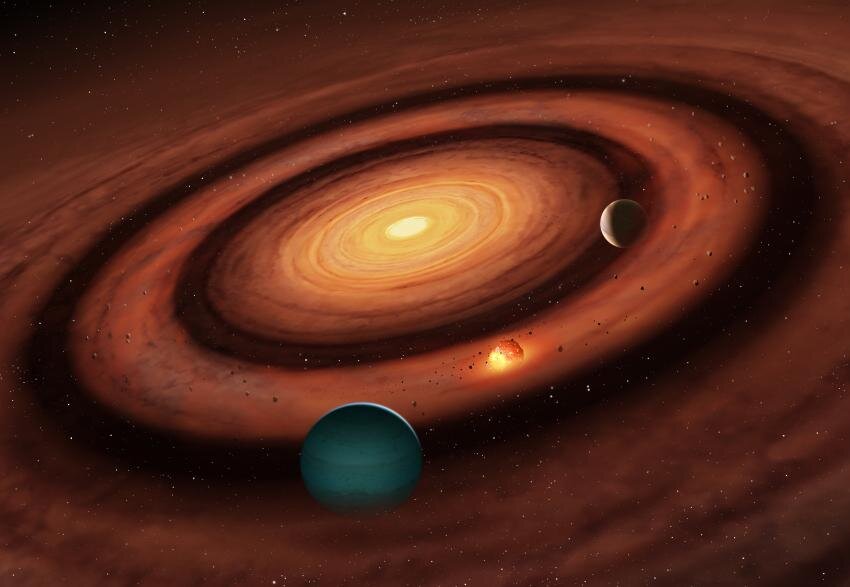Scientists have proposed a new mechanism for the formation of celestial bodies in protoplanetary disks. When two of them form a tight “sandwich”, then a third can form between them, which will have a much smaller size.

“Space sandwich”
Researchers from the University of Warwick have published a study on clouds of dust and gas around young stars called protoplanetary disks. It is in such worlds as Earth, Jupiter or Saturn are born, as well as much smaller bodies like Pluto, Ceres or Eris.
It was the creation of the latest that scientists paid special attention to. They find that when two fairly massive planets form side by side in such a disk, they create a configuration that scientists have described as a “sandwich”. It creates favorable conditions for the formation of small celestial bodies.
The two outer planets severely restrict the flow of dust between them. Scientists calculated that even if all the matter between these two planets remained, the planet that could form from it would be significantly smaller than those that formed the “sandwich halves”.
Gaps in disks
Although this theory requires further research, it may be a possible explanation for the formation of minor planets, such as Mars and Uranus, which are surrounded by large planets.
Associate Professor and Dorothy Hodgkin Fellow, Farzana Meru, from the Department of Physics at the University of Warwick says: “In the last decade, observations have revealed that rings and gaps exist in protoplanetary disks. The gaps are where we expect planets to be, and we know from theory work that planets cause dust rings to form just exterior to them. What exactly is happening in those rings poses an important question to astronomers around the world.”
“In our study, we propose the rings as sites of planet formation; specifically, that there are sandwiched planets currently being formed in those rings. This is very different to the conventional view of planet formation, where we typically expect that the planets form sequentially from the inside to the outside of the disk and get more and more massive further out. What is also really interesting is that there are examples that we have found from exoplanet observations that actually show this sandwiched planet architecture—where the middle planet is less massive than its neighbors.”
According to phys.org.
Follow us on Twitter to get the most interesting space news in time
https://twitter.com/ust_magazine
